Click, clack goes the keys as the secretary types minutes of a meeting. Do you ever wonder about the little contraption stenographers still use in the courts? Doesn’t the modern mobile phone keypad fascinate you?
Long before QWERTY phones and IBM computers, Underwood was a reigning champion. When someone alludes to an antique typewriter, you almost always think of the Underwood No. 5. Since Typewriters are common machines, what makes this brand so unique?
We’ll give you detailed information on the evolution of the infamous Underwood Typewriter, including identification and valuation tips.
Table of Contents
Parts of a Typewriter
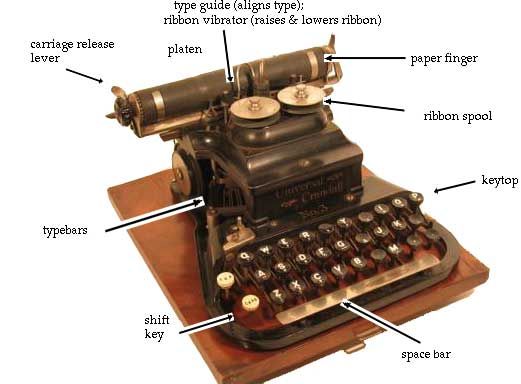
Before we proceed, here’s a quick lesson on the parts of a typewriter. It will help you flow with the article better.
- The Carriage: This refers to the movable part on top of the keyboard. It can take the form of a box or tube, depending on the model. It has a guide that holds the paper in place as you type.
The carriage also hosts all other mechanisms for the typewriter, including the return lever and escapement.
- Platen: This device looks like a roller and fits in the carriage. The guide holds the paper in place with its firm surface.
- Keytops: The keys on the keyboard have keytops as character indicators. They double comfortable coverings for easy typing.
- Keyboard: The keyboard holds all the key characters of the typewriter.
- Ribbons: This thin cloth (polymer, mylar) soaked in ink impresses letters from the keys through the typebars onto the paper. It’s often black but has unique reds and black-edge variants.
- Typebars: These devices are the metal arms that imprint characters from the keys on the paper.
Each typebar has two different characters in the front and on the back. The front keys have uppercase and lowercase alphabets, while number keys have punctuations as their alternative.
There are also shift keys that you can use to create alternate impressions. The type basket combines the typebar and the device linking it to the key.
- Return lever: The carriage return lever pushes the carriage back to the start position. As you type, the carriage moves from its static post to the paper’s end, so you return it with the lever for the next line.
The Evolution of the Underwood Typewriter
The history of the Underwood Typewriter is an interesting one, and it dates back to the end of the 19th century. Before Underwood entered the typewriter manufacturing business, more than a handful of typewriter brands already existed. The first manufacturer was an Italian printer in 1575.
Over the 16th to mid-19th century, other manufacturers dabbled into typewriter production. In 1714, Henry Mill patented his design. Then came Agostino Fantoni, who built a typewriter to honor his blind sister.
By 1908, Pellegrino Turro invented the carbon paper addition, so the list went on until 1874.
Around this time, Underwood was already a major manufacturing company – however, they made ink ribbons.
They supplied primarily to Remington until the latter ended their long-standing contract. Remington decided to make their ribbons instead of outsourcing, so Underwood decided to make its typewriters.
German-Austrian inventor Franz Xavier Wagner created the first Underwood Typewriter. This he sold to John T. Underwood. Between 1896 and 1900 (four-five years), the pair made the No. 1 and No. 2 models under Wagner Typewriter Co’s patent.
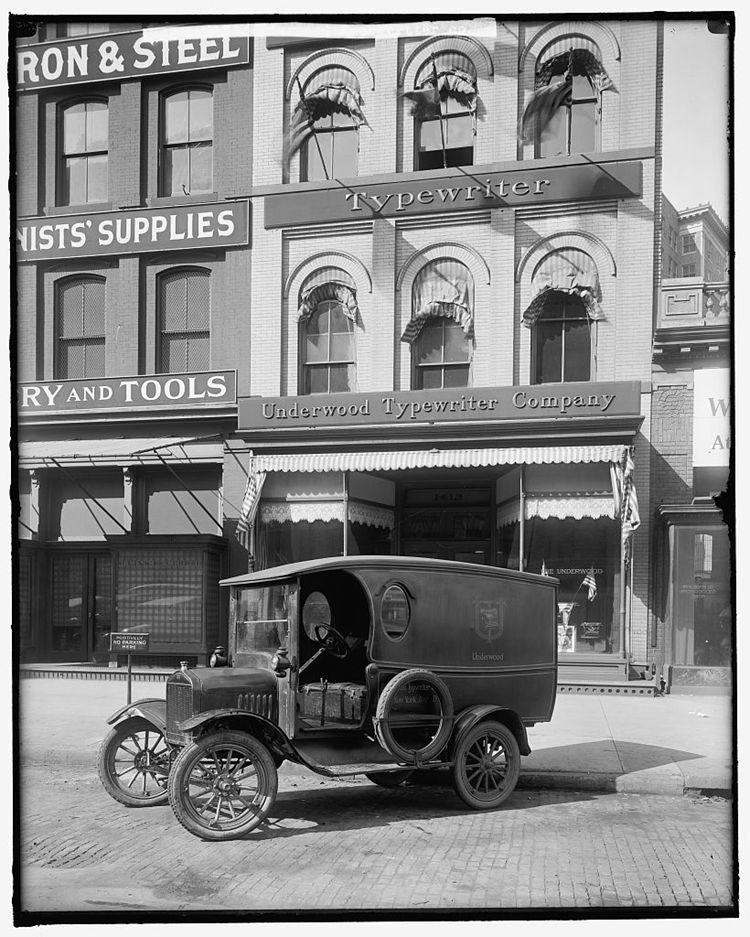
By the 1920s, the Underwood Typewriter reigned supreme amongst the numerous existing brands. It achieved this feat with three upgraded design elements – Four Rows Straight Keyboard, A Single Shift Key, and Front Striking Bars.
These upgrades increased the typewriter’s speed and overall efficiency. It was a welcome change for the blind typing users. Here are some noticeable upgrades the Underwood introduced
Front Striking Bars
Other typewriters before Underwood used a blind typing mechanism. The Striking Keys were at the bottom, so users lifted the carriage to see what they typed. This system was slow and error-ridden, but the front striking bars solved that problem.
With the front striking bars, writers could see the keys hitting the plate in plain view. They noticed errors and fixed them pronto.
Single Shift Keys
Underwood typewriters use a single shift key as opposed to other’s different keyboard mechanisms. Having the shift key on one board made typing faster.
Four Row Straight Keyboard
The four-row straight keyboard accommodated more keys than the three-row straight one. It included an enter key and the single shift key for efficient typing.
The Underwood No. 1 wasn’t the first to use these three mechanisms, but its engineering beat its 1893 predecessor – the Daugherty.
The lack of a seesaw ribbon color selector in its build added appeal allowed the Underwood Typewriter to win the Gold Medal at the Paris Exposition in 1900.
Underwood made their antique models No. 1 and No. 2 between 1896–1900. The No. 3 – No. 4 trended between 1901–1919 (the last two models qualified in 2019.) By 1920, the popular Underwood No. 5 became the T-model for every other typewriter.
By 1939, the company boasted five million No. 5 models. Other Underwood models are No. 6-11, Electric, Portable (with three rows), and Noiseless. In 1963, the Underwood company merged officially with Olivetti after selling its controlling stake in 1959.
How to Identify an Underwood Typewriter
Demand necessitates supply which is limited in antique and vintage items. With its popularity, it’s not impossible to find counterfeited Underwood Typewriters in the antique market. You can, however, identify an Underwood Typewriter when you know the signs to check.
Aside from the obvious name boldly written on the body (which anyone can fake), other details indicate the model and production era.
Identification by Name
The Underwood typewriters weren’t always “Underwood” by name. The first models were Wagner Typewriter Co. labeled because of the partnership with Franz Wagner. So, don’t worry if your typewriter has Wagner Typewriter Co. written on its body. It simply means it’s from 1896-1900, making it antique.
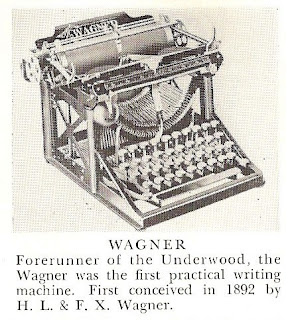
During the first World War (1914-1919,) this typewriter had the Elliott-Fisher Company boldly written on its body.
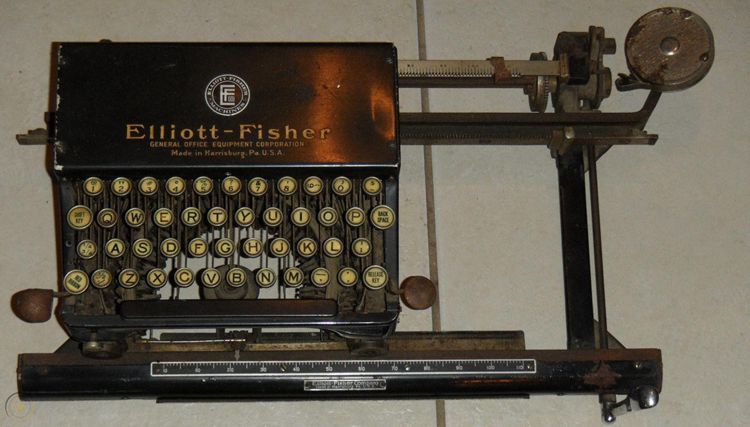
Then, after the sale to a Wagoner in 1927, it changed to Underwood-Elliott-Fisher.
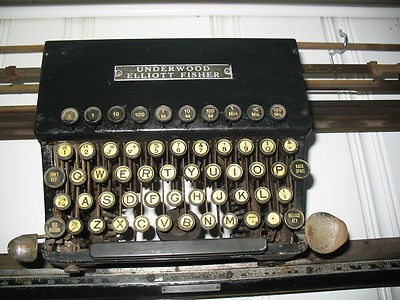
By 1929 – 1939, the name was purely UNDERWOOD in gold hue.
Between 1959 – 1963, the label switched to Olivetti Underwood.
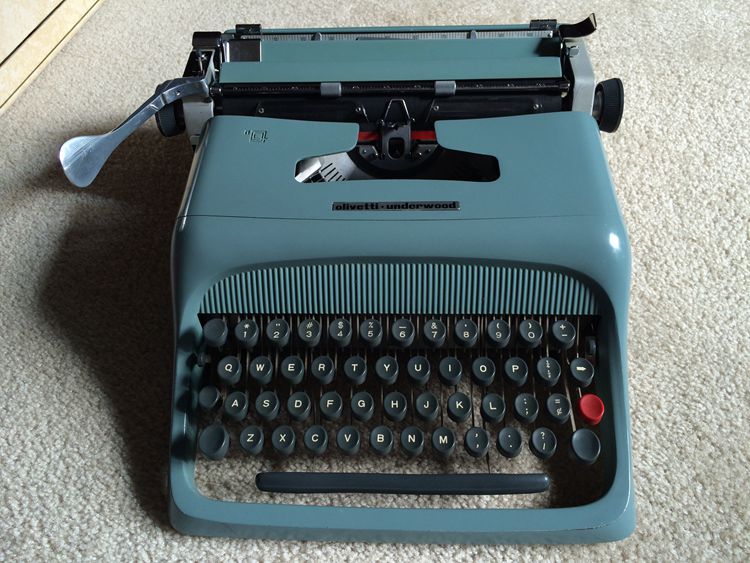
Identification by Model
The No. 1 and No. 2 Underwood Typewriters are antique models, and their production ran for only 4-5 years (1896 – 1900.) The No. 3 and No. 4 models existed from 1901-1919, and No. 5 reigned throughout the 1920s until the Second World War in 1939.
You can either identify an Underwood Typewriter’s model at a glance or by looking for markings. Lift the carriage and look on the top right corner of the body (under the carriage). You should find the model number there.
Let proceed to explore the different models and their distinctive features
Underwood No. 1
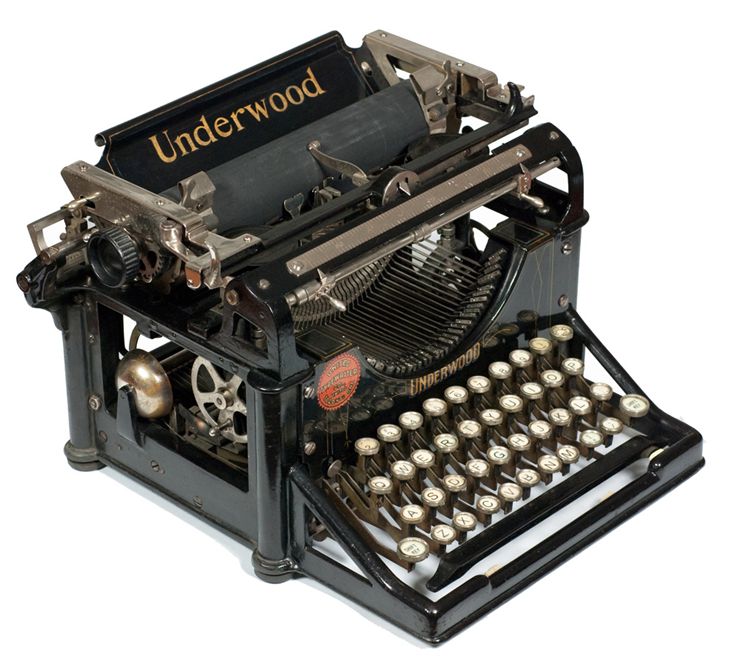
The Underwood No. 1 model has straight-four rows with a single shift key. Also, as you press the keys, the typebar goes into action. The shift key is on the keyboard at the extreme left of the first row (bottom.)
The typebar uses a striking mechanism without a seesaw ribbon color selector, and the keypad holds only 76 characters across.
Underwood No. 2
The No. 2 is similar in some ways to the No. 1, so it’s important you don’t mistake one for the other. There are slight differences, however, so pay attention.
First, No. 2 has eight additional characters, giving it 84 characters in total. The second difference lies in the carriage width; No. 2’s is wider than No. 1’s.
Underwood No. 3
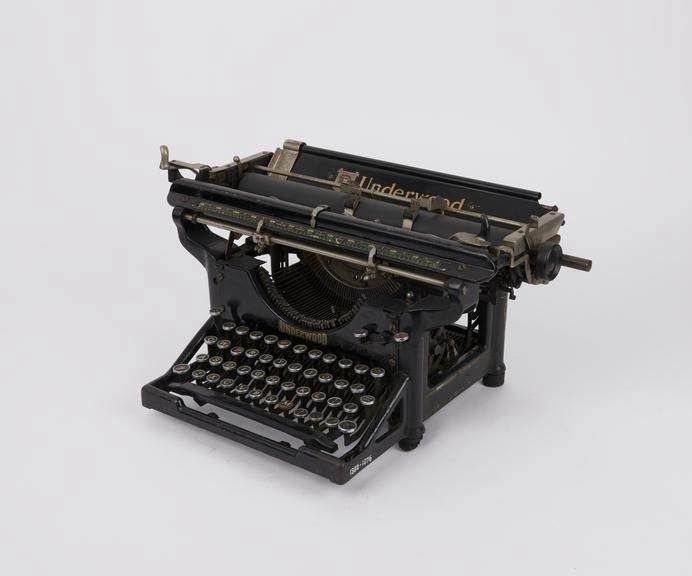
This model resembles the No. 2 model because of its wide carriage, and keyboard which hosts 84 characters. You have to lift the carriage to see the model number in the top right corner.
The Underwood No. 3 uses a manual ribbon reverse, dual marginal release keys (one on the left and right,) and Shift-Keys on either end of the keyboard.
Underwood No. 4
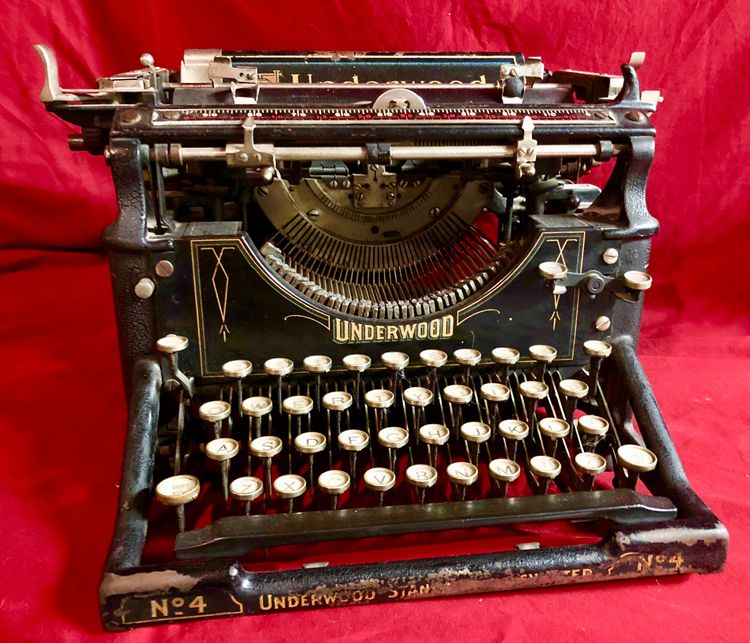
Although this model has a wide carriage like the No. 2, it only has 76 characters like the No. 1 model. So, you can refer to its design as a marriage of the alpha and beta models.
NB: The Underwood No. 3 and No. 4 were produced simultaneously with the No. 5 model, so the company discontinued the former when the latter took off.
Underwood No. 5
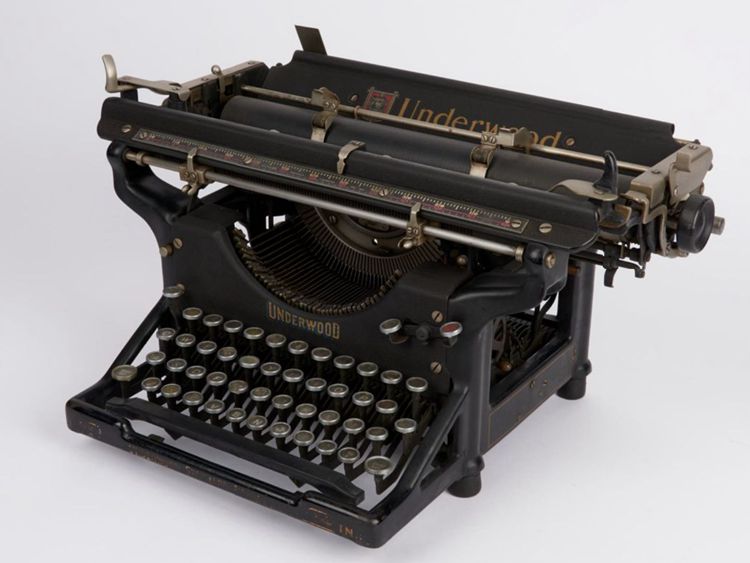
The infamous No. 5 has 84 characters (5F) with an auto ribbon reverse(5R.) Later upgrades included backspaces (5M), lateral paper guides (5E), and a two-color ribbon selector(5M.)
Before Underwood No. 5, typewriters used a manual ribbon reverse. This was time-consuming and stressful.
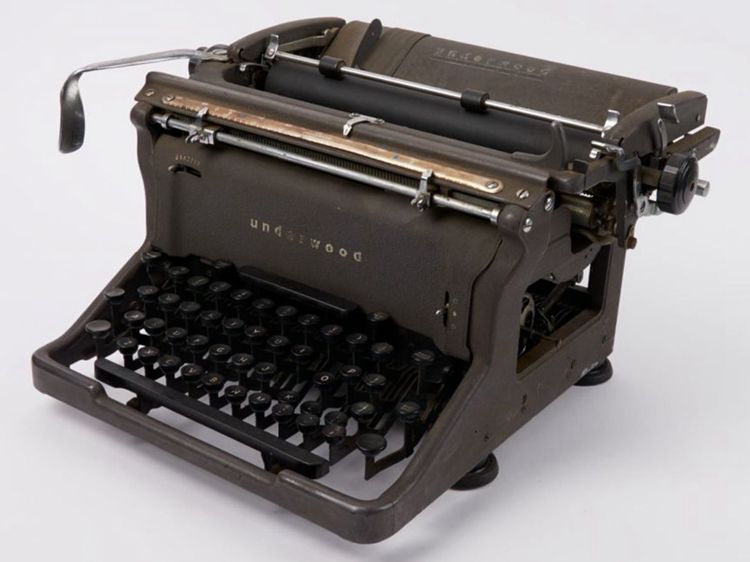
1933 Underwood 6 #4183144-10
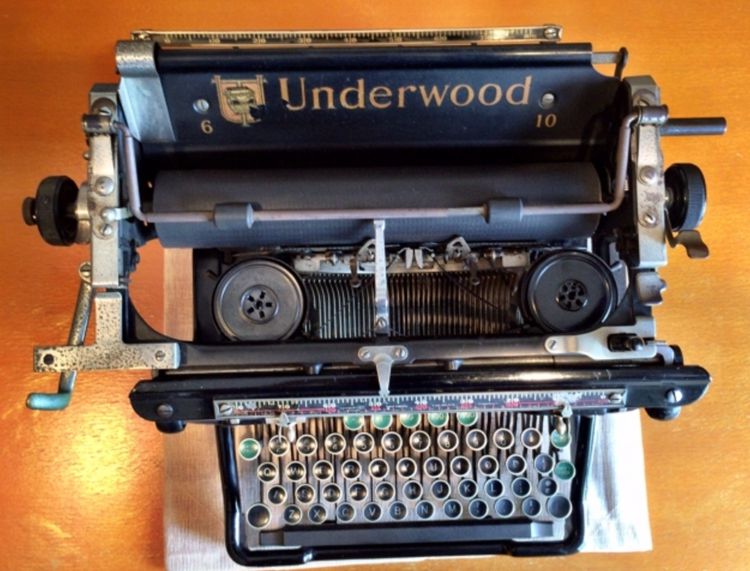
This 1936 model has a 14-inch carriage, open frame with a single panel. Its carriage is removable for easy maintenance, and it uses a carriage shift. You’ll need to use your pinky when you press the shift key instead of the basket shift to lift the carriage.
This “minor” difference is a big deal because prolonged typing can cause finger bone strain. However, the basket shift didn’t exist until the mid-1960s. After all, technology evolves to become better.
Watch this video to visualize a carriage shift compared to a basket shift.
Underwood Portable
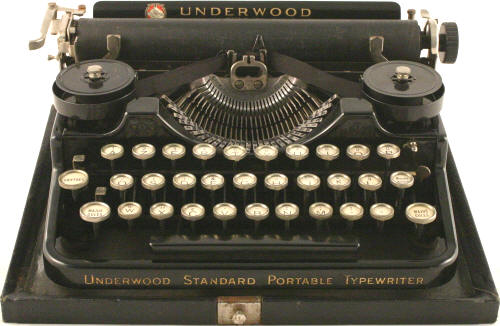
This 10-inch carriage, three or four-bank keyboard typewriters has a slightly open setting. Because of its skeletal frame, you can see the working mechanisms (ribbon spool, typebars, and carriage).
Portables made before 1930 have three-row keys on the keyboard, while models with four banks came after 1930.
Underwood Noiseless
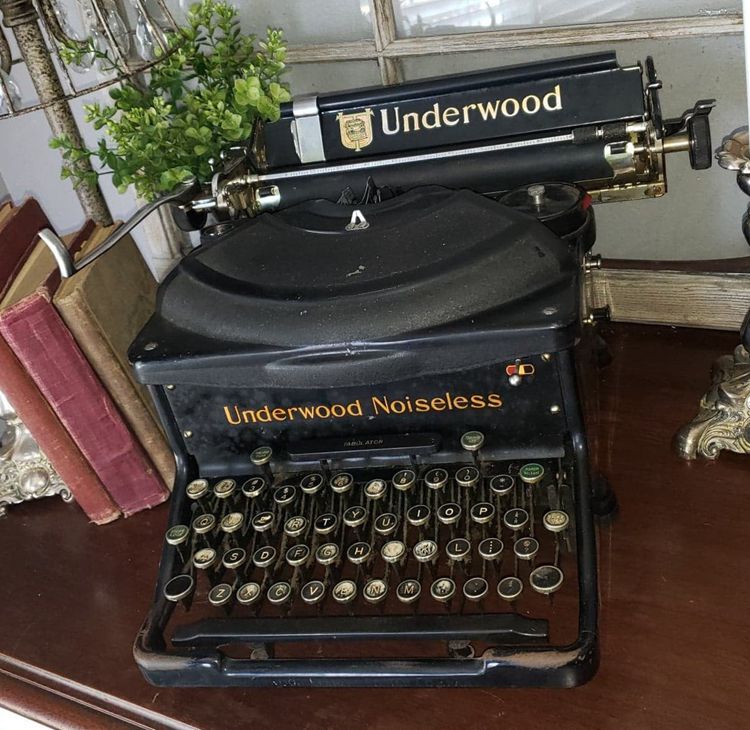
This is quite similar to the Remington Noiseless Typewriter because Underwood and Remington exchanged patents in 1920. The typebars don’t make click-clack sounds when they hit the carriage. Unlike its predecessors, the Underwood noiseless doesn’t have a hard platen.
The noiseless features four-row keyboards with a Pica typeface at ten points per inch. Please note that Pica is a bold font style than the Elite (another font style.)
Underwood Electric
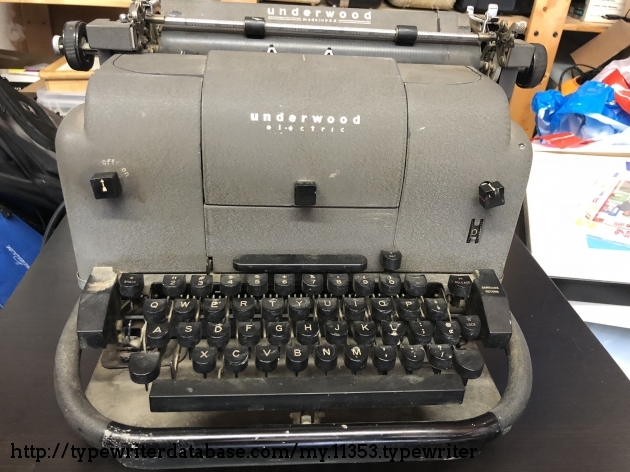
This 1950s model has a 12p font style. Its carriage is typically 16 inches, but a few 12-inch ones exist. Unlike the previous models, the typebar for the Underwood electric 565 used an electric motor drive.
The internal machinery has a cushion to keep the typewriter quiet. It has color control finger keys for easy typing.
The entire mechanism is electric, including its backspacer, forward spacer, line spacer, repeat underscore, tabulator, shift lock, space bar, margins, carriage return bars, and underscore.
Underwood No. 18 – 21
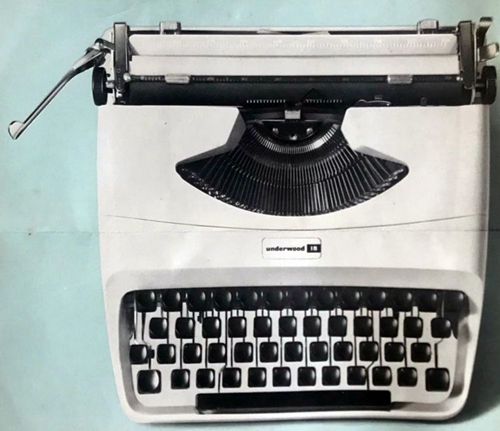
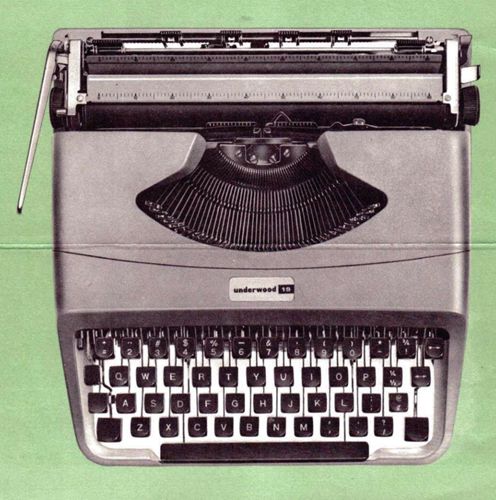
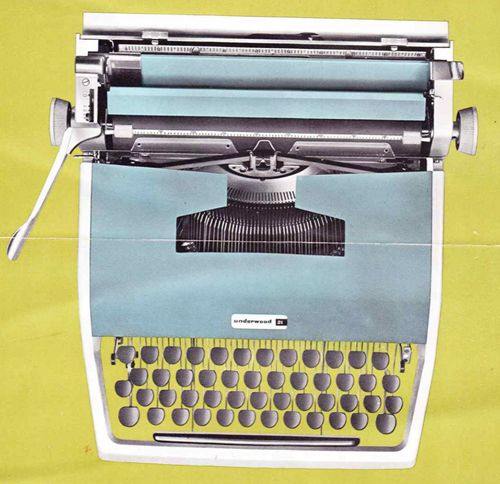
The Underwood Typewriters No. 18 – 21 had foreign-language keyboards for international use, including French, Italian, German, and Spanish. The keyboard layout followed the French’s “AZERTY” instead of the standard “QWERTY.”
Identification by Design
Underwood Typewriters can additionally be identified by size. Models manufactured before the mid-1930s were compact and had an open frame. Afterward, they became wider like the typical office typewriter with enclosed frames. Some even had affixed cases.
An open frame is a skeletal design that gives you a full view of the typewriter’s mechanism. However, with a closed frame, you can slightly see the typebar or not see it at all – it depends on the model.
The Underwood electrical pictured just before this section is a closed frame typewriter by this analogy. The No. 1 – No. 5 are open framed.
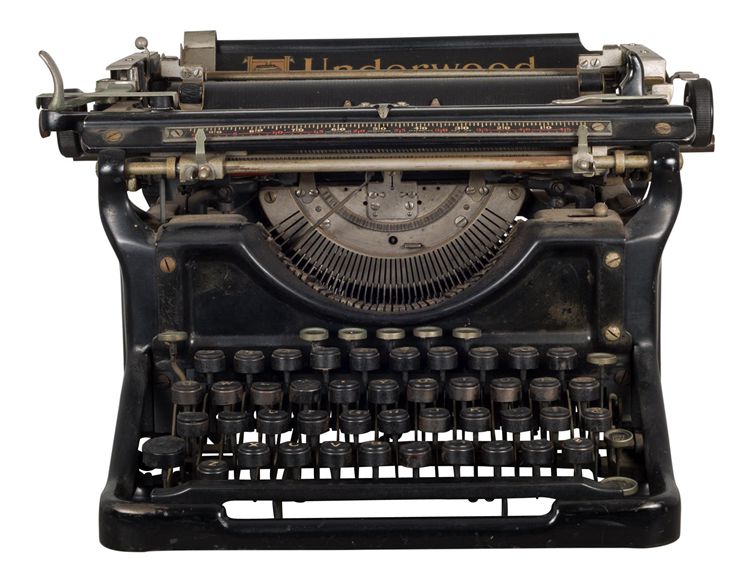
Identification by Keys (for Underwood Portable)
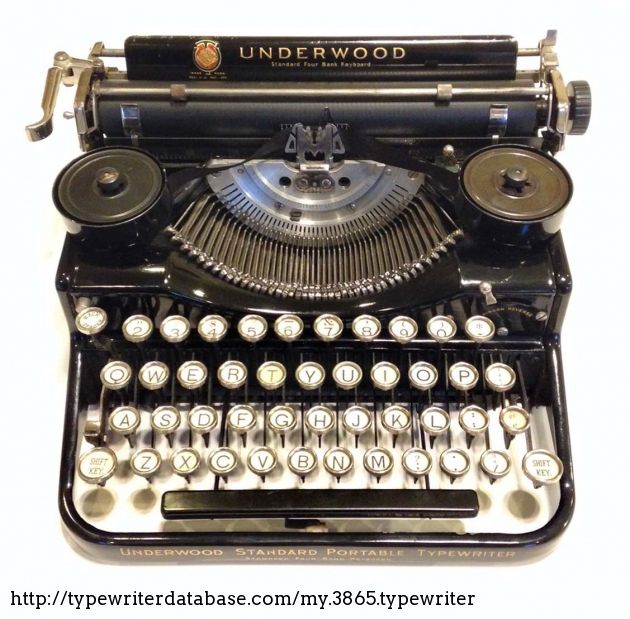
Underwood made portable typewriters with three-row keyboards between 1919-1929. From 1930 until its end, the company made four-row keyboard typewriters. There are, however, some exceptions, so you shouldn’t rely solely on identification by keys.
You can find a Portable Underwood typewriter with four rows and other models with three rows. It’s good to have backup means of identification.
The Underwood portable (three-banks) has the standard features of other Underwood Typewriters. However, there are some twists.
It has a line space lever, two paper fingers, a paper bail (for holding the paper at the bottom), a paper scale, line finder scale (indicates line text,) ribbon carrier, color selecting lever, and ribbon spool guides.
Finally, unlike other models, to unlock the carriage, you need to move it to the right (others use left movement.)
The Underwood portable (four-banks) has a paper clamp, marginal stop, writing point, paper bale, line space lever (returns carriage for new lines,) single-shift key (two characters per key,) shift key lock and release, ribbon reverse, dual-color ribbon lever, and stencil cutting.
Identification by Serial Number
After Identifying an Underwood Typewriter by Model, the Serial Number is the next reliable means of identification. You would find it in the top right corner under the right end of the carriage. Each era of Underwood typewriters has a unique serial number group.
Year |
Serial Number |
1900-1902 |
100–1000–10000 |
1904-1908 |
50000-200000 |
1909-1912 |
247000–450000 |
1913-1917 |
551000–940000 |
1918-1925 |
1050000–1910000 |
1925-1931 |
2070000–3825000 |
Use the Typewriter Serial Number Database to find the exact year and month your Underwood Typewriter was manufactured.
Valuation of Underwood Typewriters
“Are Underwood Typewriters worth anything?”
“How do I know the value of my Underwood Typewriter?”
Because Underwood Typewriters are popular, they typically don’t cost much. However, there are always exceptions to the rule.
Generally, three principles govern how antique items are valued; Age, Rarity, and Material. For Underwood typewriters, we’ll add Condition, Font, and Popularity to that list.
Production materials for antique items are inherently valuable because they withstand the test of time. However, some materials are more durable than others, so they rank higher on the value ladder. For instance, Mahogany is more expensive than Applewood.
Enough of the theory. Let’s get into practical details.
Age
Age is a huge factor in the valuation of antiques because they’re items of historical importance. With technological advancement today, it’s crucial that we preserve bits of the past for educational and sentimental purposes.
Any item over a hundred years old is an antique, and if it’s less than 100 years but older than 50 years, it’s vintage. Following this analogy, we can group Underwood typewriters into Antique and Vintage.
Antique Underwood Typewriters
Underwood No. 1 – No. 4 fall under this category. The first antiques were No. 1 and No. 2 because they were 1896 – 1900 products.
The No. 3 and No. 4 models came between 1901 and 1919, making them recent qualifiers in the antique league (they clocked 100 years from 2001 to 2019.) Though they’re not as expensive as the No. 1 and No. 2 models, they’re high-valued.
This group of Underwood Typewriters is valued at $1,000.
Vintage Underwood Typewriters
The remaining Underwood models, the infamous No. 5, No. 6-11, Electric, Portable, and Noiseless, are Vintage typewriters. According to age ranking, the highest to lowest valued in descending order are the Underwood Portable (the 1920s,) No. 5 (mid-1920s-1939,) No. 6-11 and Noiseless (Mid-1930s,) and Electric (1950s.)
Underwood Typewriters from the 1920s cost about $500 while those from the 1930s go for $300-$400. The 1950s models (electric) cost $50-$75. However, this rule isn’t headfast because other factors can increase the value of an otherwise cheap item.
Rarity
Rarity adds value because of the limited stock. The less available a model is, the higher the market price. Even in present-day economics, limited-edition items are more expensive than regular ones.
No. 1 and No. 2 are the highest valued Underwood Typewriters (Wagner Typewriters co.) due to their limited stock. Underwood only made 12,000 No. 1 and No. 2 typewriting models, so they fall under the rarity grade.
Fonts
Underwood Typewriters with unique lettering fonts are expensive because they’re rare. There’s no point collecting a typewriter with regular font if you get the same result from a computer. Underwood Typewriters with Vogue and Cursive lettering are high-valued amongst collectors.
The 1960s Olivetti-Underwood have cursive typewriters, so they’re quite expensive even though they’re vintage.
Condition
Most people buying antique typewriters need them for work. Top condition typewriters are more valuable than a broken typewriter. That’s why, as an exception, refurbished Underwood Typewriters are expensive (normally, retouched antiques lose their value.)
A broken Underwood Typewriter costs as little as $25, while a refurbished one goes for a whopping $800. Notwithstanding its years, this typewriter can go another hundred with proper maintenance. The mechanical manual ones thus carry a higher value than the Underwood Electric.
Sometimes, broken Underwood Typewriters can cost a fortune, increasing in value when the parts become rare. So, if the carriage is faulty, you can take the keys apart as a replacement for another one.
Please note that you can also use the typewriter parts for other items. The materials are durable so, if the Underwood in your arsenal is irredeemable, sell it for scraps.
Popularity
With Underwood typewriters being readily available, popular ones cost a fortune. Once dealers attach sentiment to an item, it increases in value. Underwood Typewriters are pop culture icons represented in blockbusters like “The Shining” and “Catch Me If You Can”.
Prominent writers like Stephen King and Nora Roberts used classic Underwood Typewriters to deliver incredible books.
Suppose you get a typewriter pre-owned by a celebrity or notable person, the price increases. For instance, the exact Underwood used by Frank Abagnale Jnr. in “Catch Me If You Can” is more valuable than a similar model pre-owned by a non-celebrity.
The “AZERTY” Underwood costs $499.99 (asking price) because it’s a movie prop.
Another type of popularity is indigenous or hometown sentiment. Underwood Typewriters cost more in their traditional home of Connecticut because collectors in the hometown may have personal attachments.
Also, the No. 5 Underwood Typewriters are notable for their efficiency and quality, so they’re high-valued. Its reputation makes it a coveted model amongst its pairs.
You can compare bids on eBay, Etsy, and the Vatican online or visit a physical auction for live-action.
Final Thoughts
Underwood Typewriters are one of the top-quality finds of vintage and antique typewriters. They’re also easy to date because of the meticulous labeling system. If you follow the simple tips above, you won’t have a problem.
Quick tips to always remember;
- Underwood Typewriter No. 1 and No. 2 are 1896-1900 items.
- Underwood portable Typewriters with three rows are pre-1930 designs, while the four-row keyboards are post-1930s.
- You can use your Underwood Typewriter for scraps if it’s irreparable.
Remember, when in doubt, visit the Typewriter Serial Number Database to check the exact details of your Underwood Typewriter.






![Vintage Schwinn Bikes: [Types, Identification, and Values]](https://www.txantiquemall.com/wp-content/uploads/2022/05/5.-Schwinn-1967-Ramshorn-Fastback-Stingray-Sky-Blue-vtg-600x450.jpg)
